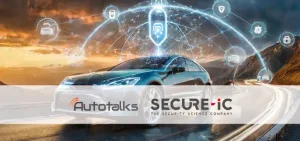By Onn Haran
EV batteries are well protected against fires. The battery pack is kept in a guarded enclosure, and its temperature is constantly monitored. These extra measures are needed since lithium-ion batteries are extremely sensitive to high temperatures and inherently flammable. If a lithium-ion battery pack fails, it will burst into flames and can cause widespread damage.
Once an EV catches fire, the scene should be immediately evacuated. You should never attempt to extinguish lithium battery fires yourself. Fires like these may burn for days and it’s important to isolate them from flammable materials and prevent them from expanding.
Statistically, 25 EVs are burned for every 100K vehicles.[1] That number may worsen as the average age of EVs on the road will increase.
A traffic accident can trigger an EV fire, and V2X can prevent many of these accidents. The value of V2X isn’t limited to that. The information exchange can help contain the safety risks resulting from a fire.
Prevent the risk

Imagine an EV burning in an underground parking of a skyscraper. What a terrifying thought.
Cruel as it may sound, when the slightest doubt emerges that an EV battery might catch fire, it shouldn’t be let in the parking lot.
With V2X, the parking gate would open only to EVs with low battery temperatures.
Furthermore, underground parking garages typically do not have cellular reception. If the temperature starts to rise, V2X could receive the first notification and alert the parking management.
Locate the vehicle

The cellular network is the most suitable wireless technology for reporting an EV fire, with a service similar to eCall. But its availability cannot be guaranteed. Not only underground parking garages have bad/no signal, but also – not all roads are fully covered.
The fire department should reach the burning vehicle as soon as possible. When the cellular network is unavailable, V2X will still work, and can publicize the location of the burning vehicle.
Expect a slowdown or a lane change

An overheating EV should stop immediately, and the driver and passengers should vacate the vehicle. A vehicle may heat up while driving in the left lane, leading to multiple lane changes until reaching the roadside. Such sudden maneuvering endangers surrounding vehicles.
With V2X, the surrounding vehicles can be made aware of the EV problem. The drivers will pay extra attention and steer away from the faulty EV.
Prevent bystanders from approaching

A good Samaritan might attempt helping a vehicle that stopped on the roadside. That would be highly dangerous if the fire will burst. Only the fire department should approach such a stopped vehicle.
Once V2X warns of a faulty battery, even the most curious or helpful people would stay away for their own safety.
Current status and next steps
V2X currently doesn’t include a faulty battery indication. It is a rather simple addition to a relevant container as V2X messages are easily extendable. ETSI, defining the messages in the EU, and SAE, their counterpart from the US, can apply this change quickly.
The collateral damage of EV fire is high. V2X can mitigate that. We call NTSB (National Transportation Safety Board) and NHTSA (National Highway Traffic Safety Administration) to consider V2X as part of EV battery fire safety research.[2] Adding battery fault indication to the V2X message and assuring that all EVs will include V2X can prevent catastrophes and save lives.
[1] https://www.autoinsuranceez.com/gas-vs-electric-car-fires/
[2] https://www.ntsb.gov/safety/safety-studies/Documents/SR2001.pdf






